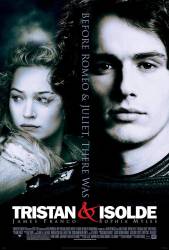Question: This is a strange question, but is it possible that Isolde could sleep with both the King and Tristan so many times and not get pregnant? Was there any kind of birth control at this time?
Answer: Yes, it's entirely possible. Even in this day and age, with our relatively detailed knowledge of the processes and timing involved, couples trying for children can sometimes try for months or even years before a successful conception.
Answer: Three answers. ONE: Manuscript medical texts survive from Anglo-Saxon England. These describe folk wisdom and empirical medical tradition handed down from generation to generation. Herbs and herbal products were used as cures and prophylactics. These say little about contraception (they were written by monks or nuns who lived celibate lives) but it could be inferred that women used herbs and herbal products for women's issues (including contraception), knowledge refined over generations and handed down orally that has been lost or forgotten. TWO In the middle ages diet, nutrition and health conditions were such that, in general, people were not as healthy as they are today, so women may have been less "fertile" and less likely to become pregnant after sex. THREE: The legend of Tristan and Isolde is not accurate history. It began to circulate in the twelfth century, but even then it was a story, told to entertain, and this cinema version is a fictional, fantasy re-imagining of medieval life (similar to Game Of Thrones or Lord of the Rings) so such logical details do not necessarily apply.
Question: Does anyone know if makeup/cosmetics or other beauty practices, such as women plucking eyebrows and facial hair, existed during this time period? I know that this is just a movie and the actresses are supposed to look attractive, but I'm curious if it would have really been around back then.
Answer: For Dark Age beauty hints look at the website of historical novelist Octavia Randolph, on https://octavia.net/ Your question is brilliantly answered in the section https://octavia.net/early-cosmetics/ The Pre-Christian Anglo-Saxons and Vikings were buried with grave goods, items they used in everyday life. Archaeologists often uncover burials of men and women who were buried with elaborately carved combs for hair care, tweezers for plucking out surplus hair, ear scoops and small wash basins. There is good evidence that people processed herbs and flowers as cosmetics and make-up.
Answer: The historical sources from the time in question are scant - it's not called "the dark age" for nothing. Having said that, beauty practices like plucking eyebrows and make-up have existed since ancient times. We can safely assume that there were certain ideals of beauty, and ladies of all times strove to meet them. These ideals have changed frequently over the times, so plucked eyebrows may or may not have been the fashion in early medieaval Britain.
Question: Near the beginning of the movie, at Isolde's mother's funeral, what does she mean when she says that her mother's heart killed her?
Answer: Isolde's mother was forced into an arranged marriage and it tore her apart because she really hated her husband. Isolde's mother believed in true love and was depressed. Even though you can't die from unhappiness that's what it seems like - especially to little Isolde.






Answer: Without going into detail, two possible birth control options would be the withdrawal method or earlier versions of condoms. It's unlikely that Marke and Isolde were using these methods, because Marke, as a king, would probably want children to be his heirs. But Isolde might have at least been taking precautions with Tristan, especially during the time that she was betrothed to Morholt. There would be trouble if she became pregnant while her betrothed was away. Also, as Tailkinker wrote, maybe she simply did not conceive.